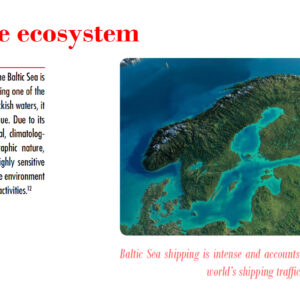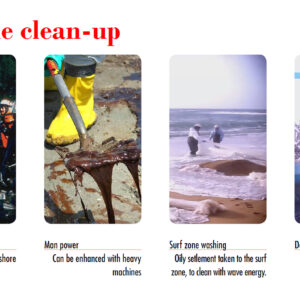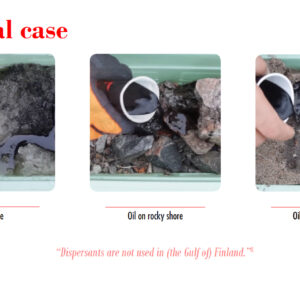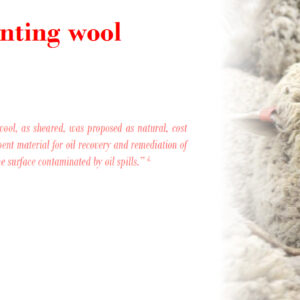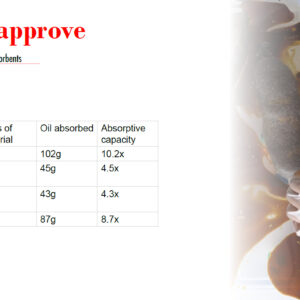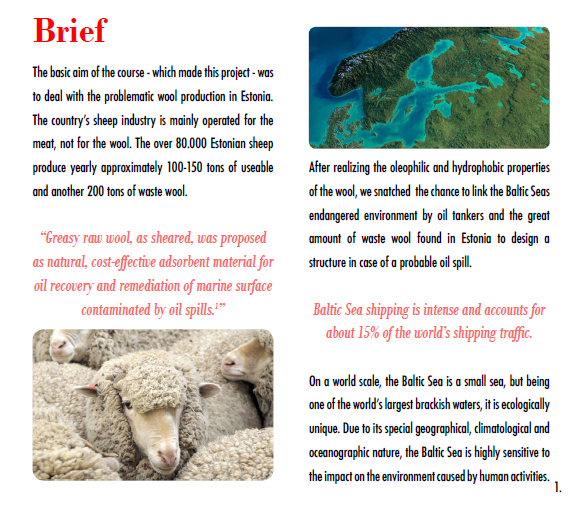
The basic aim of the course – which made this project – was to deal with the problematic wool production in Estonia. The country’s sheep industry is mainly operated for the meat, not for the wool. The over 90.000 Estonian sheep produce yearly approximately 170 tons, 90% of this is unusable waste wool.
After realizing the oleophilic and hydrophobic properties of the wool, we snatched the chance to link the Baltic Seas endangered environment by oil tankers and the great amount of waste wool found in Estonia to design a structure in case of a probable oil spill.
Among other natural and even most synthetic materials, studies approve that wool is the best in oil absorbing, water repealing and it also has a nice restore capacity after the oil has been removed from its surface. However, yet it is not used in oil response technologies. Our research has pointed out that implementing wool in oil response technologies has justification, but at least worth a try. Our solution is a product based service. We considered to create such a system that fits the existing instruments, so that it doesn’t require huge money investments.
Supervisor: Katrin Kabun
2019
Projekti autor:
Áron Priczel (Ungari), Grete Kedler, BA2

